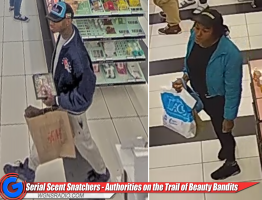Is it a "Murfreesboro Miracle"? The community leader turned age 69 two-hours before 2016 was rung in, and scientific data shows them much stronger and helping more than during their teen years.

WGNS is now a spry 69!
As the New Year of 1947 approached, rural Rutherford County had a dramatically different feel than that of today. Approximately 8,000 persons populated the entire county. It was a big thing for the county to get its first radio station!
Word is that at 10:00 o'clock Tuesday night, December 31, 1946, throughout the county people were tuning their radio dials to 1450. Suddenly the static vanished and a strong new signal appeared. WGNS rang in the New Year of 1947.
Glenn Snoddy, a legend in the Nashville music scene, was one of WGNS' first engineers. (photo above, Glenn tweaks the controls in 1947). Back then it took racks of equipment to make everything come out clearly over the airwaves! In the early days of radio there were no miniature transistors or solid-state circuits. Large tubes that generated much heat caused all of the equipment to be large and complex.
With the innovation of transistors and miniaturization, equipment in today's radio studios is much smaller, more dependable and reproduces sound with perfect life-like fidelity.
Initially, WGNS' offices, studio and transmitter were in a small two-story block building that was near the station's giant self-supporting 328-foot tower. Once on-the-air, engineers focused on constructing the main studio on the Historic Murfreesboro square. Since Cecil Elrod was the station's first owner, the studio moved in about a year to the mezzanine of that family's business. Elrod's French Shoppe, an elegant lady's apparel store on the east side of the square, soon became the radio station's home.
In 1960 WGNS moved three blocks off the square, to its present location at 306 South Church Street. The new home was built specifically for the radio station. In the years after the move, you could visit the Elrod French Shoppe and still see the glass enclosed studios on the mezzanine. The difference being the rooms displayed women's fashions.
'Boro Listeners Love Sports

Just like today, local sports was extremely popular on WGNS. This 1947 basketball broadcast is from the gym at Central High School. (L-R above photo: Ray Duffey, Hollis Harris who started "Movies Under The Stars" locally, and his mother) One of WGNS' first play-by-play announcers was Ray Duffey. His thick Boston accent made him really stand out.
Ray became so popular that he became the first Director of the Murfreesboro Parks and Recreation Department. Beside him is Hollis Harris and Harris' mother. That same year, Mr. Harris started the free Movies Under The Stars as the first function of this city's parks department. Hollis was the first employee of the parks department. It was several years before Ray Duffey left WGNS to become the first director of Murfreesboro's Parks and Recreation Department.
Over the years, WGNS has devoted much of its airtime to sports. We were the only source of Blue Raider sports for many years. Now, since MTSU has grown to have this state's largest undergraduate enrollment, MTSU games are heard on a network of stations in other mid-state cities. WGNS continues to be the Heart of Tennessee's Blue Raider affiliate. Since 1947 WGNS has included live play-by-play of the local high school games. Through the efforts of such greats as Monte Hale, Dick Palmer, Jeff Jordan, that has expanded dramatically to include some elementary and middle school sports. Now, Bryan Barret continues the tradition. And of course, since 1981 WGNS continues to be your Atlanta Braves station.
Involved In Community

The Smyrna Air Base was once a major source of employment in Rutherford County. It was created by a War Department order issued on December 22, 1941. That was just a few months after the Japanese attack on Pearl Harbor. This 3,325 acre air base was mainly used by B-24 bombers. It became the home of the U.S. Air Force's 314th Troop Carrier Wing. In 1949 the 463rd Troop Carrier Wing took over, and then in 1966 the 64th Troop Carrier Wing/Tactical Airlift Wing called the base home.
On March 25, 1950, the Smyrna Air Base was renamed to honor fallen native Nashvillian Allan J. Sewart, Jr. On that date the massive air base became known as Sewart Air Force Base. To entertain the troops, some of the most popular musicians did shows there. WGNS broadcast these programs "live" over the Liberty Radio Network. Although that network is not around today, it was the largest network of radio stations in the nation at that time. Here Johnny Long's big band plays their big hit A Shanty In Old Shanty Town (above photo).
Other popular bands broadcast live over WGNS included Ray Anthony, Les Elgart, Neal Hefti and others. John Hood served as the emcee of these nationwide broadcasts that were originated by WGNS. Sewart Air Force Base was a vibrant part of this community for almost 3-decades. It was a sad day on May 31, 1971 when Sewart Air Force Base became a memory.
However, that was not the end of the airport. The complex was transferred to the Army Corps of Engineers. It later was run by the Nashville Metro Airport Authority, and then a newly formed Smyrna-Rutherford County Airport Authority took control. An industrial park was developed where the former air base once stood, and firms that needed air transportation moved to Smyrna.
This massive airport remains the third largest in Tennessee. Only Nashville and Memphis International Airports are only slightly larger. The huge airport helped to attract the Nissan Motor Manufacturing plant to Rutherford County in 1982. The rest is history...Rutherford County is now the fastest growing county in Tennessee and one of the fastest growing in the nation.
WGNS works to be heart beat of Heart of Tennessee

Above photo: In the WGNS French Shop studios circa 1948 (L-R) WGNS began its involvement in the community.
Over the years, John Hood emceed broadcasts of Spelling Bees from Central High School and covered the famous General Douglas MacArthur visit to Murfreesboro. MacArthur''s second wife, Jean Marie Faircloth, was from Murfreesboro.

John Hood is remembered for his Man On The Street interviews (above photo L-R: Slick Davidson, Hood, and John Nelson). John would go to the streets of Murfreesboro and ask the public its opinion on various issues that impacted our community. After a career in banking, Hood was elected to serve the areas as a state representative for several terms.
By the way, WGNS Talk Radio brought Man On The Street back to the airwaves. It appears to be even more popular these days. In fact, with the addition of the radio station's website (www.WGNSradio.com), the Good Neighbor Station makes it possible for listeners to interact with each other. An open line of communication between the public and community leaders is what WGNS is all about.
Circle of Life

Ironically, the man who gave Bart his first job in radio got his start at WGNS. This picture (above photo) shows Bill Barry when the studios were on the square. The year was 1947, and the Good Neighbor Station was playing Woody Herman, Harry James, and Tommy Dorsey, along with soap operas, and remote broadcasts from businesses around the square.
In fact, at that time the majority of businesses in Murfreesboro were located on the square. There are stories of how people would come to town on Saturdays and meet friends, shop and stroll until midnight. Many of the merchants remained open until then to service the customers. During this period of time, the Good Neighbor Station had some well-known persons get a start here.
Community leader and retired State Representative John Hood, Carl P. Mayfield who has a nationwide following on satellite radio, Mr. Boots, Boots, Boots Jerry Brown, well-known local musician Carl Tipton, nationally known announcer John Young who still loves WGNS so much that you hear him on various program introductions, sportscaster Monte Hale who has a local street and the basketball arena at MTSU named in his honor, along with an endless list of many other leaders who went on to become well-known lawyers, school superintendents, and other positions.
Without question, Monte Hale won the hearts of sports enthusiasts. After a long battle with cancer, Hale died. To honor this broadcaster, the arena at MTSU's Murphy Center was named The Monte Hale Arena. In addition, a street that connects with NW Broad Street was named Monte Hale Drive by city leaders. Bill Vogel and Monte Hale owned WGNS from 1960 to 1971.
In 1971, a group from Nashville owned WGNS. Rumors indicated a former governor was involved in what he said was a need for a "Good News Station".
Walker Brought Local Ownership Back In 1984
 In 1984, local ownership came back to WGNS as Bart Walker became involved (left photo: Bart at age 14). This marriage has now lasted over three decades, almost as long as all of the others combined.
In 1984, local ownership came back to WGNS as Bart Walker became involved (left photo: Bart at age 14). This marriage has now lasted over three decades, almost as long as all of the others combined.
Walker recalls, "When I first took over management of WGNS in 1984, people would stop me and say they used to work here. It almost became comical. It seemed like everyone used to work at WGNS."
Walker noted, "This is the greatest community in the world. The people of Murfreesboro and Rutherford County are always there to help when a local emergency arises or when help is needed in distant places."
And with a myriad of tornadoes, ice storms, floods and other natural disasters, WGNS has had an opportunity to keep the community informed on what is needed.
In fact, WGNS was honored by being names the Tennessee Emergency Management Agency's "Station of the Year" for its tornado and ice storm coverage.
When asked what he thought the future of local radio would be with the advent of social media, Walker replied, "As long as there are people, they will want to hear local sports, know what's happening, celebrate friend's birthdays, want to swap and sell items--so if radio embraces changes in technology, there will always be a strong place for WGNS."
A stream of famous people walked up the stairs in the French Shoppe and were interviewed on WGNS. The local radio station created numerous local celebrities. Paul Howell did his popular DJ show from the French Shoppe. His country music show each weekday afternoon earned him the honor of being named the Grand Ole Opry's D.J. of the Month. Howell was also very technically savvy. He served as one of the engineers at WGNS during this time frame. Paul worked with late Cecil Elrod, Ray Duffey, Hal Christiansen and Carl Tipton. He was also at WGNS when Jerry (Pee Wee) Brown and retired State Representative John Hood were on-the-air.
Since WGNS returned to being a family business 30-plus years ago, the station has increased power, added two FM frequencies, world wide service through the internet and positioned itself as a major source of local news.
Inform With Empathy Of A Good Neighbor
Today the radio station still reports news, obituaries, local civic and church events in a manner to which you would expect a Good Neighbor to operate. Advances in technology have made equipment much smaller. In the old days, you could heat the radio station with the equipment. Today's solid-state designs put out very little heat and are extremely energy efficient. New technology enables WGNS to take listeners to remote locations never possible in the earlier years, plus the sound is so clear--it sounds as if you are still in the studio.

L-R above photo: WGNS VW mini-van is the station's remote studio on wheels in the 1960's. Here (L-R) Broadus Davidson, unknown man, Jerry Brown, and Neal Lancaster do a Veteran's Day broadcast.
WGNS has a history of doing "live" broadcasts from local businesses and from special events in this community. In those days the equipment used to broadcast away from the studio was large and very heavy.
In the 1960's WGNS carried this equipment in a VW van, and you know how popular those vehicles were then. The Good Neighbor Station took listeners everywhere (and still does). Jerry Brown (above photo, holding microphone) did mornings on WGNS for almost 40-years. In fact, Jerry holds the record of being on WGNS for the greatest number of years. Watching is local radio sales legend and motivational Dale Carnegie instructor, the late Neil Lancaster.
Today's technology enables WGNS to do studio quality remote broadcasts not only from ballgames, but from moving Rover buses, walking along parade routes, taking the station wireless to do "Man On The Street" opinion poles around the historic square. Now the complete remote studio can be clipped to your belt, and you are wireless to get your program back to the radio station and have studio quality at the remote location. You can be live on WGNS from anywhere in the world.
So, when 2016 rolled-in at midnight, families in Murfreesboro also were able to celebrate the 69th birthday of a good neighbor--WGNS. We thank you for that trust and friendship that has lasted for almost seven decades.











